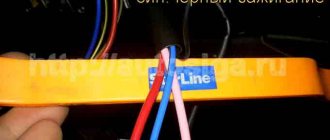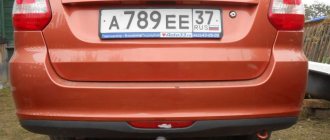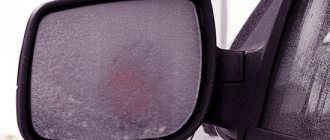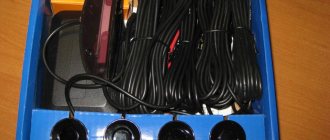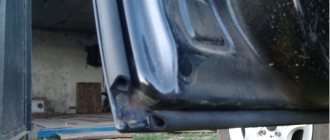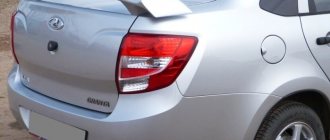The car, known in our country as the Lada Granta, became a successful continuation of the Lada Kalina model. And, over the several years of its production, motorists managed to form their own opinions about it, which, in many ways, have positive features. We're talking about a more powerful engine, as well as a roomy interior, which is especially true for our area.
But, naturally, there cannot be an engine that does not require initial running-in, both after its manufacture and after its overhaul. Today we will give you some advice regarding the features of running in the Lada Granta power unit.
General information
As soon as a car comes off the assembly line, it needs to be broken in.
It is impossible to do this within the manufacturer’s enterprise, so this task falls on the shoulders of the buyer.
The need for break-in arises for the simple reason that the engine parts have not yet gotten used to each other, so work at higher speeds can be complicated. Break-in, as a rule, includes idling and power, no more than the basic operating parameter.
If you purchased an 8-valve engine, then your first maintenance will be at 2000 km. After this, it is considered that the engine has already been run-in. But most Lada Granta owners do not increase the load until at least 5,000 km.
Which engine is better in your opinion, 8 or 16 valve?
Advantages
The break-in process has its advantages. There is no need to think that the procedure was required before (during the USSR), but now it is not necessary to do it. This is just a marketing ploy, nothing more. Properly carried out running-in guarantees a long service life of all parts and components of the machine.
What benefits does the vehicle receive after running in:
The moving elements of the units undergo grinding in.
The roughness of individual elements is smoothed out.
Identification of manufacturing defects and problems.
The engine and lubrication system “get rid” of chips.
If the driver violates the break-in rules, this will lead to negative consequences.
Many buyers believe that the procedure only helps to accelerate the engine. But the transmission, brakes, and other components are subject to adaptation.
Running in the Lada Granta engine
Speed limits during engine break-in (excerpt from the operating manual)
In principle, running-in should be carried out for almost all parts, but for the engine it will be most in demand.
After purchasing a new Granta, you will need to fully charge the battery, because it could have been discharged while the car was at the dealer. Next you need to check if the starter is working properly. And, of course, it is necessary to conduct a full visual and functional inspection of the car, which would help determine the presence of certain malfunctions. In most cases, this is enough to detect serious flaws. Minor problems will manifest themselves in the first few hundred kilometers of the journey.
Gasoline must be used only 95, this is what AvtoVAZ prescribes, but most drivers use 92. The thing is that in our country the most popular way to obtain 95 gasoline is to add additives to 92 gasoline, which are often of low quality.
Fuel consumption during the break-in period may differ significantly from factory values. Until the parts rub against each other “inside the engine” there will be increased resistance.
Read more about the consumption standards of the Lada Granta sedan here!
Checking a new AvtoVAZ engine in severe subzero temperatures
VAZ itself recently conducted a clear demonstration that the new car is capable of starting and operating normally at subzero temperatures reaching thirty degrees.
In addition, the heating system was checked. So, after the car had completely cooled down, it took only fifteen minutes to warm up the windshield by ten percent. This indicator may be considered acceptable for a car of a higher class. Even though 8-valve engines, due to the peculiarities of the cooling system, have an operating temperature of 80 degrees.
Absolutely no problems were found during the operation of the internal combustion engine, which indicates the good quality of the car.
How to properly break in a new car
Before starting the break-in, the car owner needs to check the level of engine and transmission oil. A measuring probe is used specifically for this purpose.
Features of checking the fuel level are as follows:
- It is necessary to warm up the engine and gearbox.
- After about 10 min. After turning off the engine, the vehicle is placed on a flat surface.
- Access to the engine and gearbox is provided.
- The measurement is carried out using a measuring probe.
It is recommended to use synthetic oils. Their main advantage is good fluidity at low temperatures. Also, thanks to this fluid, it ensures easier engine starting and reduced wear of its parts when exposed to high temperatures.
Thus, after purchasing a car, you need to monitor the level of gasoline (diesel) and gear oil. The first check is carried out after 100 kilometers. Periodically, the driver should look under the hood to see if there are any oil leaks under the car. You also need to check your tires and their pressure.
What not to do when running in a Lada Granta engine
If you do not want to send your car straight away for repairs, then you should listen to the advice of experts who will tell you what not to do during break-in. These recommendations will help to avoid overloading parts that have not yet been ground together, which could result in vehicle breakdown.
In general, there will be five points.
- The first recommendation is that the speed should not reach two thousand revolutions. This is especially true for a sharp increase in speed when you actively work with the gas pedal.
- The second tip says that the car should not be overloaded, neither with luggage nor with people. It is optimal to ride with two passengers and very few things. This will help further reduce the load.
- Point number three suggests that sudden braking is best avoided. Pay attention to “engine braking”, which will be even more harmful for an untested car.
- The fourth tip suggests that it is undesirable to drive in critical gears. Most often, we are talking about maximum (fifth) gear. But until this indicator, it will be enough to follow only the advice on the number of revolutions.
- And, of course, it is worth highlighting that driving on highways will be undesirable. The reason for this is that the average speed on such roads will reach one hundred kilometers per hour, which is an excessive indicator for the new Lada Granta.
Always try to listen carefully to any extraneous noise your car makes. This is especially important during break-in and, even more so, when starting the engine for the first time. If you hear something suspicious, you need to immediately turn off the engine. This will help avoid costly repairs. It’s one thing when a sensor in one of the engine control systems is faulty, and a completely different situation arises if the timing belt breaks.
Do not start driving until the engine has warmed up. To do this, let it idle for at least five minutes.
City driving mode
The technical documentation for the Lada Largus car, which is equipped with a 16-valve engine with a volume of 1.6 liters, states that when driving in a populated area, gasoline consumption should be on average 12.4 liters. What is urban mode? These are the driving conditions of a vehicle in which you have to stand in traffic jams, drive slowly in a continuous stream of cars, stand at traffic lights and maneuver at intersections. This driving mode uses, of course, more gasoline than when driving outside the city.
The driver, who decided to check compliance with the amount of fuel specified in the documentation, went to the city in a LADA Largus with a mileage of 1197. That is, the car is still undergoing the break-in process. Therefore, slightly higher gasoline consumption is acceptable.
The tester was caught in serious traffic jams and his air conditioning was running all the time. Under such driving conditions, the fuel consumption was 13.3 liters. a fairly acceptable figure for the breaking-in time of Largus. If you go out on the road when city streets are least congested, and have a smooth driving style, you can sometimes reduce the amount of fuel used by up to 2 liters. Those drivers who are accustomed to driving by fast acceleration and braking are unlikely to be able to count on a reduction in fuel consumption.
Fuel consumption in urban mode is on average 12-13 liters
Further operation of the Lada Granta
AvtoVAZ recommends running-in the engine up to 3000 km
There is an opinion that the Grant model does not need to be run in at all after purchase. This statement is based on the fact that the manufacturer carries out tests at the factory. But, of course, you shouldn’t listen to such advice, as your car and financial condition will suffer from it.
As mechanics with sufficient experience assure, running in a car significantly extends the period of time when the car does not require special maintenance from its owner or a complete replacement of faulty parts. The main rule is that it is impossible, under any circumstances, to reach extreme operating conditions, both in terms of speed and number of revolutions.
Running in will help the engine develop its own dynamics, according to which it will continue to operate. If this is not done, positive specifications will be reduced and the quality of the parts will suffer significantly.
If additional power is not needed, then the tachometer needle should be at around two thousand revolutions. Exceptions are possible during overtaking or other maneuvers, when you can briefly accelerate the engine to three thousand revolutions.
Brake system
I'll start with, perhaps, the easiest thing - the brakes (I want to leave the engine for a snack). Why should they be rubbed in? Even when you, and even more so the disks, you need several tens, and maybe hundreds of kilometers, for the top layer to be erased (both here and there) and for the planes, so to speak, to be “stuffed” for further loaded work (probably everyone has noticed the black dust on the discs after installing new pads)
On the blocks
there is an upper (softer) layer that should go away in the next 150 - 200 kilometers, and it is not recommended to make long and sharp braking, you need to remove the surface evenly.
There is no such layer on disks; it starts working immediately. BUT there is no mirror here, which is stuffed with friction linings. As a result, a grinding process is also needed.
To reveal their effectiveness, the brakes require careful handling in the region of 200 kilometers. Everything is simple here.
Intervals and mileage
The running-in of a newly purchased car must be carried out in compliance with the initial mileage standards. The instructions for the car indicate how to carry out the procedure correctly. Experts say the break-in period is not that important. In this matter, you need to focus on the intensity of use and mileage of the car.
As for mileage, the first 2000 km are important for a car. The owner must follow all recommendations without increasing the load on the machine. The exact figure can be found by reading the manufacturers' requirements.
A full running-in of a new car's engine is how many kilometers? For some brands, mileage can vary from 2000 km to 5000 km. The indicator is formed depending on the type of motor. For example, a diesel engine requires twice as much mileage.


